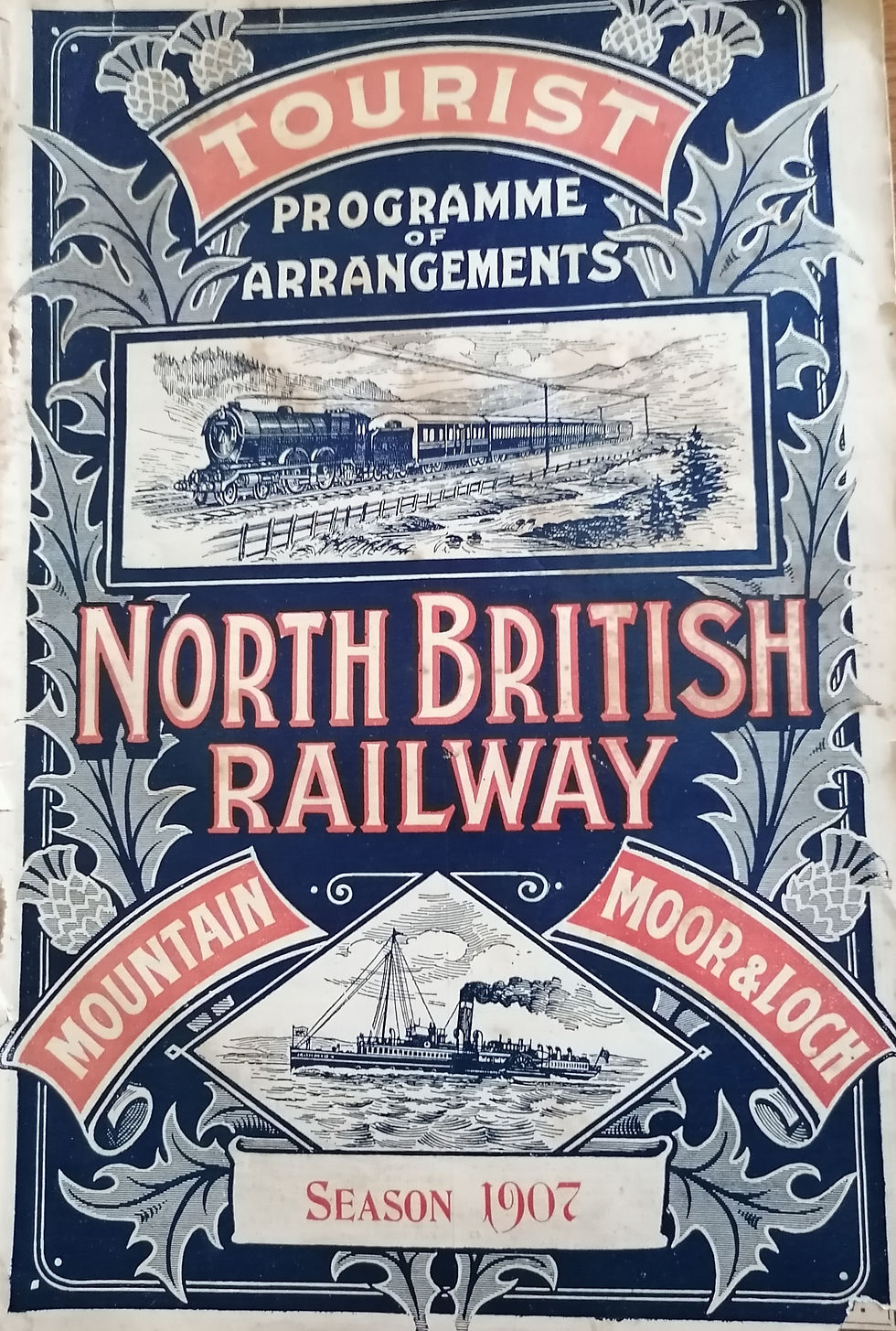Port Carlisle
- Friends of the NRM
- Nov 7, 2021
- 4 min read
Updated: Apr 1, 2022

I expect you are all enjoying autumn with its, well, frankly, ‘changeable’ weather. On one such day recently I headed for the northern Lakes but then headed off, away from the Lakes towards Cumbria’s Solway Firth coast. On a chilly and windy day it feels quite a bleak place with the water and mud flats of the Firth framed against the hills of Dumfries and Galloway on the far side. My interest in the area is a long standing one since, to me, it represents one of the glorious, if lesser known failures of the railway age.
The problem for nearby Carlisle was its lack of usable access to the open sea. The first attempt to ‘correct’ this was a canal opened in 1819 to the hamlet of Fishers Cross on the shore of the Firth east of the city, subsequently renamed with optimism as ‘Port Carlisle’. The canal lasted until 1853 and the railway to Port Carlisle subsequently opened in 1854, using the filled in canal bed. I wonder if it occurred to the ever optimistic Victorian businessmen that the flat, silted beds that fringe the Firth might be a problem. Hadrian had been there before, of course, with his wall, but left little trace. Maybe he knew something they didn’t.
Port Carlisle is a pretty bleak place at the best of times (no offence to the locals) and has remained a small village to this day. Hadrian is remembered and maybe the old railway station remains, but that’s about it.

But other plans were afoot and a new port, with docks, opened at Silloth, a little to the west. If it was to be a rival to Port Carlisle Silloth certainly set about its task with gusto; the works contributed to silting up at Port Carlisle, and leading to terminal decline there. Silloth docks opened in 1856 and the service from Port Carlisle to Carlisle was then terminated at Drumburgh. Steam locomotives were unaffordable so a ‘Dandy’ Car service operated, rather like an old stagecoach body, running on wheels along the track and pulled by a horse. In this form the Port Carlisle Dandy cars (there were 4) lasted until 1914. Various attempts were made to continue with the line, including the use of ‘The Flower of Yarrow’, a steam sentinel railmotor, but the line closed in entirety in 1917.
Silloth, meanwhile, became not just a port (sailings to Liverpool) but also a quintessential Victorian seaside resort. Today, the buildings stand out, laid out in a grid fashion, streets using stone sets and all based around a colossal 36 acre Green that faces the sea. Many buildings alongside the Green are Grade 2 listed and painted in lively colours. Old photos show Silloth in its prime, and in the recent past – certainly not forgotten but never, really, a port for Carlisle.
For me, history is always interesting when you build in the human side of things. I walked into ‘Mrs Wilson’s’ coffee shop facing the Green for refreshment and shelter from the keen wind. ‘Who was Mrs Wilson?’ I asked and was guided to a display all along one wall. Mrs Wilson was the internationally renown opera singer Kathleen Ferrier, a native of Silloth, who died in 1953 at the untimely age of 41. After a few moments of contemplation, out came my notebook.
‘Port Carlisle, and then Silloth. What were they thinking? Was there a shift somewhere from the heady optimism of a real railway and port to Carlisle to something more like a seaside resort? This is a place for tough holiday makers and adventurous types, but then that’s me speaking with hindsight. History is a wonderful thing when you know what happened next. It’s why nostalgia thrives; we can relive the past with the comfort of knowing what followed.
So, that’s the history part, reader - well, the bare bones of it, the story of a failure but not a really catastrophic one, saved by tourism. The twist is that one of those Dandy carriages survives in the NRM, positioned conveniently close to the ‘Mallard experience’ simulator (surely a tease by the curators). Painted in North British Railway colours it’s easy to work out what went where, which class of passenger was on the inside and which on the outside. It looks perfect for a summer’s day, but in winter?
There’s an illustration by the caption board too. The Dandy car looks idyllic, celebratory, defiant; whichever way you want to look at it, Carlisle’s answer to a port on the Solway Firth. Not really likely but worth a go, don’t you think?
‘Polyphemus’
John Swanwick

Friends of the NRM is an independent charity, established in 1977 to support the National Railway Museum. We have raised £1.8m to date in support of the museum in funding, restorations, exhibits and acquisitions of new artefacts.
We also support and promote research and educational projects relating to the history and development of railways.
Read more about our contributions here
Find about how you can become a Friend of the NRM here





Comments